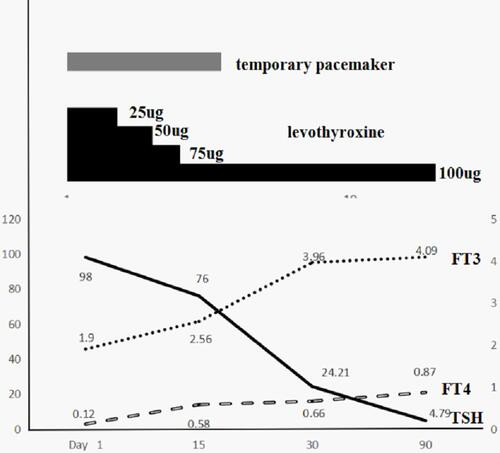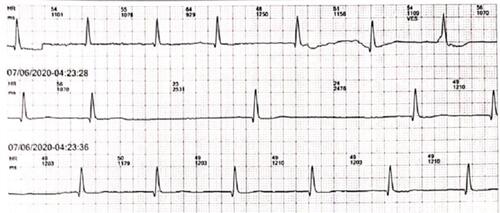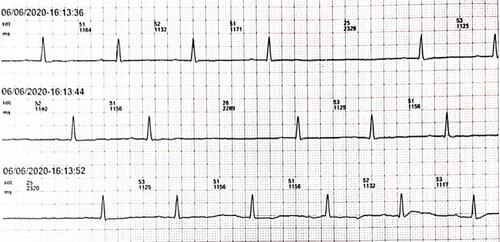Figures & data
Figure 3 He ECG showed that sinus arrest lasting 4.5 seconds occurred on the day of admission, specifically at twenty past three pm.

Figure 4 The changes in clinical course and levothyroxine dose, as well as laboratory data including free T3 (FT3), free T4 (FT4), and thyroid-stimulating hormone (TSH) were shown. From day1 to day 3, we kept giving the patient a dose of 25 ug of levothyroxine per day, and then gradually increased to100ug daily from the 14th day, while this patient’s temporary cardiac pacing was discontinued on day 17, which might indicate that thyroxine supplementation may have improved the electrocardiogram abnormality.



